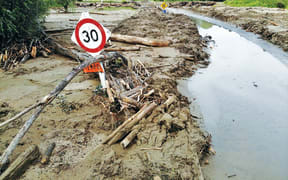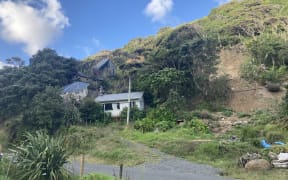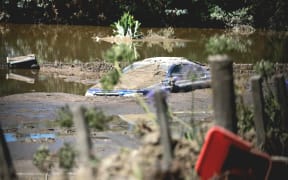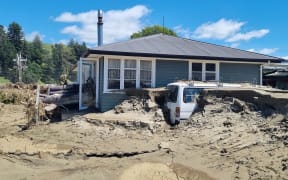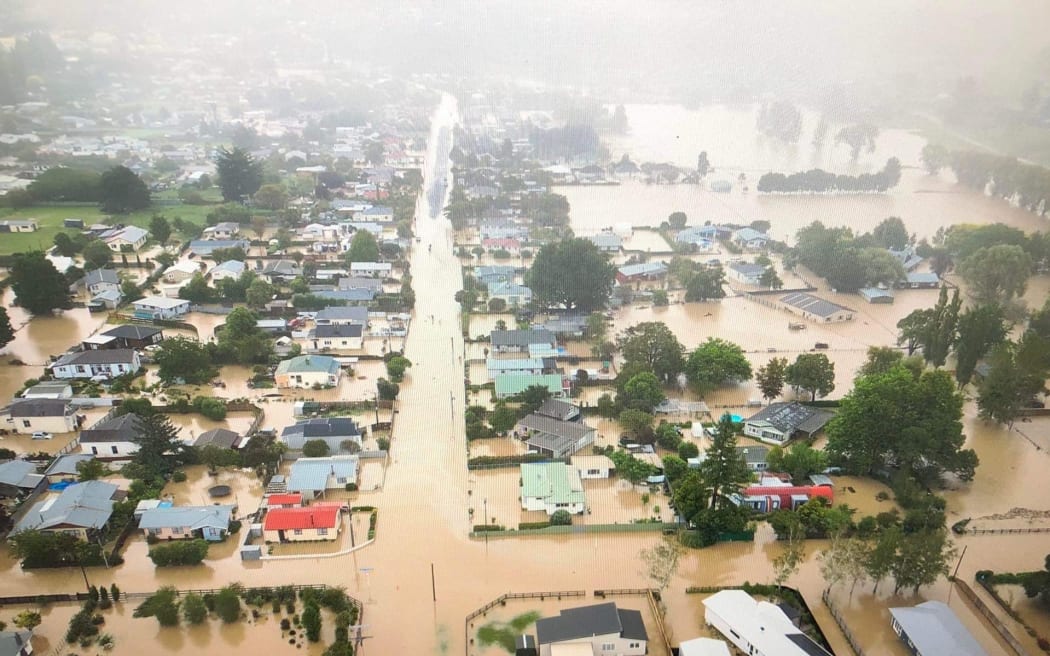
Central Hawke's Bay flooding after Cyclone Gabrielle Photo: Supplied / Bryce Fergusson
When Cyclone Gabrielle hit, the government agency tasked with leading the emergency response to a national disaster did not have enough trained people to staff its 24-hour crisis centre.
That is one of a litany of failures detailed in a report released Thursday, from the National Emergency Management Agency's (NEMA) own review of its response to last year's catastrophic storms - Auckland's January flooding and Cyclone Gabrielle.
NEMA identified 19 lessons and made recommendations for resolving each. They mirror an inquiry's findings released last month that New Zealand's emergency management system was not fit for purpose and the country was not ready to respond to large-scale emergencies.
NEMA's report showed it was short on trained staff during Cyclone Gabrielle, and then failed to quickly and adequately brief disaster experts arriving to help from overseas.
Adding to that, the building where NEMA's crisis centre was headquartered was not up to scratch, and it had no single system for sharing information. The report said this "impacted decision making, resource utilisation, and workflows at a national, regional, and local level".
At the peak of the response, the National Crisis Management Centre was operating 24 hours a day, running two 13-hour shifts each day that each required 135 staff from NEMA and other agencies.
"NEMA had about 160 staff (around half having less than two years emergency management experience) covering operational, strategic and corporate functions. Even if all staff were fully trained, NEMA on its own could not staff a 24-hour shift."
"While most NEMA staff have a background in emergency management, many staff had no previous experience in a response of this scale. This placed a high demand on NEMA's experienced staff, while at the same time, inexperienced staff felt pressure to perform in an unfamiliar environment."
Other agencies, including New Zealand Defence Force, Fire and Emergency (FENZ) and NZ Police also deployed personnel.
The report detailed how NEMA staff deployed to the regions had difficulty using their work IT equipment.
NEMA coordinated 709 deployments of personnel who were not agency staff - including 77 disaster experts from Australia, Fiji and the US. But there were problems swiftly deploying and briefing these teams flown in to help - the 33-strong Australian team reported delays due to the slow flow of information from NEMA to FENZ.
"The Australian AUS-1 Disaster Assistance and Response Team reported a delay in initiating their deployment due to the speed at which NEMA (as lead agency) provided coordination information."
The US team 11 people said their briefing did not include maps of the affected areas, information about the Civil Defence hierarchy or states of emergency, and they were not briefed on Māori tikanga.
"The United States Agency for International Development (USID) team raised that understanding the New Zealand government system and the operational and cultural contexts in a response setting is critical for international responders. They need to establish themselves easily and be effective during their deployment."
The USID team said they received a briefing on arrival.
"However, they noted that the brief did not cover Māori tikanga considerations, maps of the affected areas, the [NEMA] structure/hierarchy (local, regional, national), or a state of national emergency."
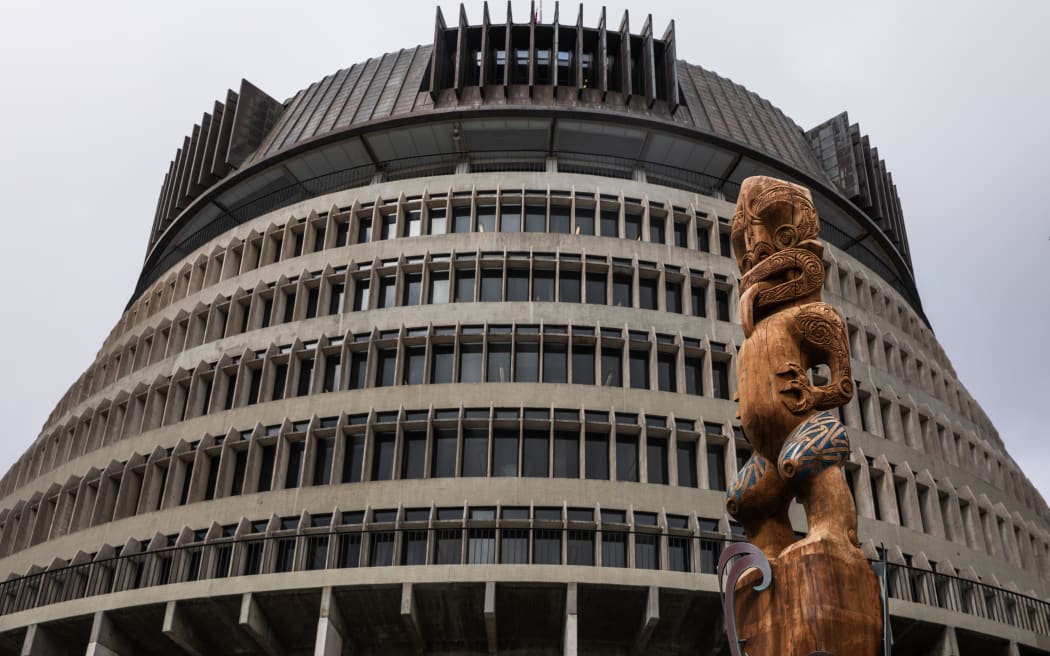
The Beehive. Photo: RNZ / Samuel Rillstone
Beehive bunker blues
Meanwhile, the headquarters for the national crisis centre was causing a raft of other problems.
NEMA stood up its National Coordination Centre in the Beehive bunker on the night of 27 January during the Auckland flooding, and again when Cyclone Gabrielle struck in February.
The National Crisis Management Centre also set up in the same basement, as part of the national security system arrangements, to run in conjunction with the coordination centre.
NEMA found the Beehive bunker was not fit for purpose and its IT systems were unreliable. It was too small, with poor cellphone and insufficient Wi-Fi coverage, lighting and ventilation, and there were not enough toilets or nearby carparks.
"There were also challenges in maintaining Covid-19 infection prevention and control protocols."
On 12 February, a day before Cyclone Gabrielle caused catastrophic damage across the North Island, an IT outage in the crisis centre shut down communications for "several hours".
NEMA's response
NEMA acting chief executive Jenna Rogers said it was standard practice for the agency to conduct an internal review of its operational response after emergency events.
She said NEMA's lessons were broadly consistent with the government inquiry's findings and recommendations.
"We have a responsibility to find gaps and fix them and that's our priority at present."
Rogers said NEMA relied on other government agencies to provide extra staff during a large-scale disaster.
"We do not have the numbers in our agency to resource those longer larger responses. It's fair to say the emergency management system is somewhat built for a sprint - short, sharp weather events."
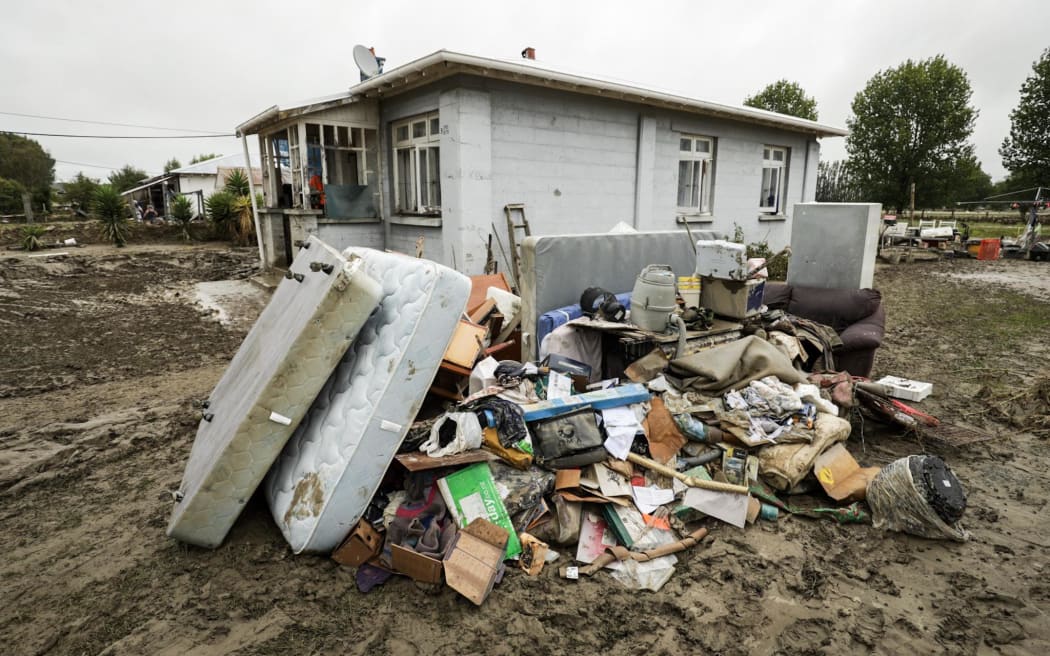
Debris piled up in front of a damaged house in Wairoa after Cyclone Gabrielle. Photo: Nathan McKinnon
But she acknowledged the need to train NEMA staff, given half had less than two years' emergency management experience at the time of last year's storms.
"As the national agency responsible for leading in this space, it's critical that our people are trained and ready to roll for these events."
Rogers said there had been no progress finding a single system for sharing information between agencies during an emergency.
"It's a challenging system to land, and it's certainly something that we have looked at over the years but haven't been able to land at this point. Cost is a factor - it's a complex problem to solve and an area the wider government inquiry has identified."
NEMA was working on its protocols for receiving intelligence, such as scientific information during a disaster, from other agencies.
"One of our key lessons is how to better science intelligence into our response. That's an area we've started to work on immediately."
Asked whether she thought NEMA was fit for purpose, Roger said more was needed to be done across the emergency management system.
"What we're realising in New Zealand more and more is these events are increasing - not only in frequency, but also in their severity. We are also faced with a greater understanding of the true nature of hazards and risks that New Zealand does face…
"We have invested over the years and we have grown and been through a lot of these events, but we know more is needed."

